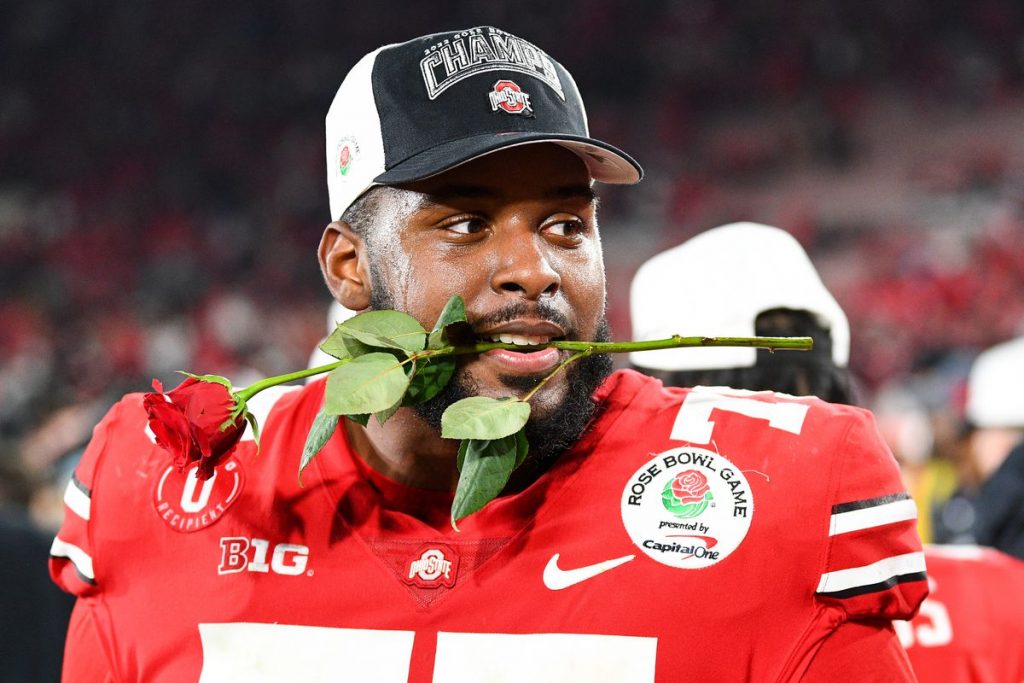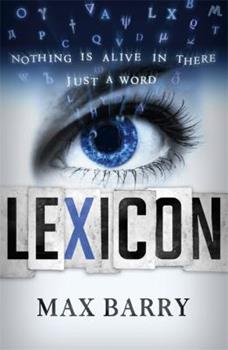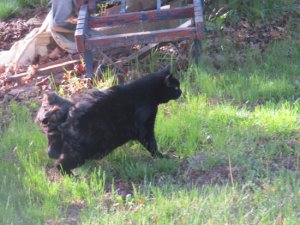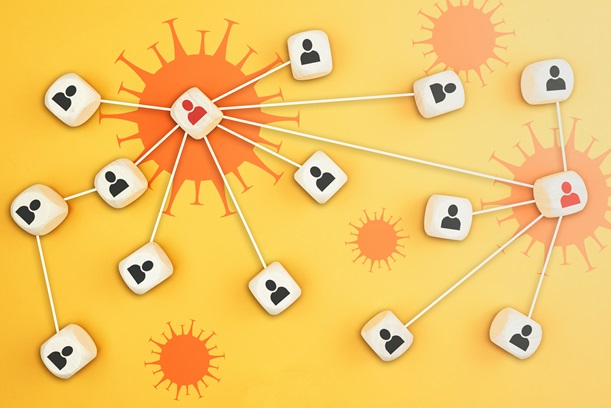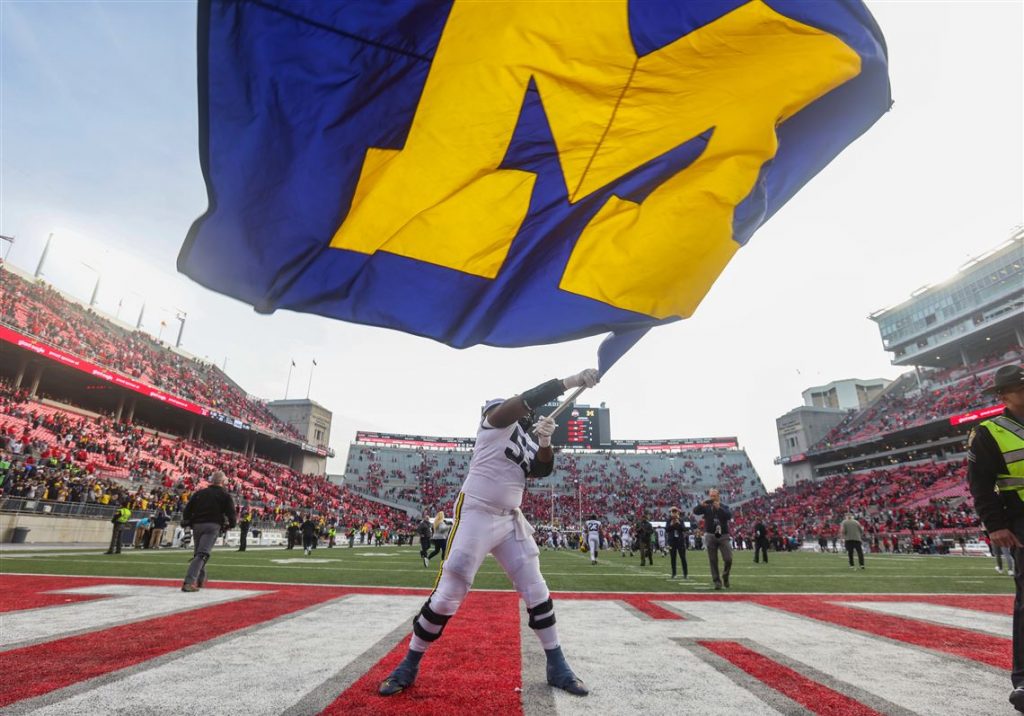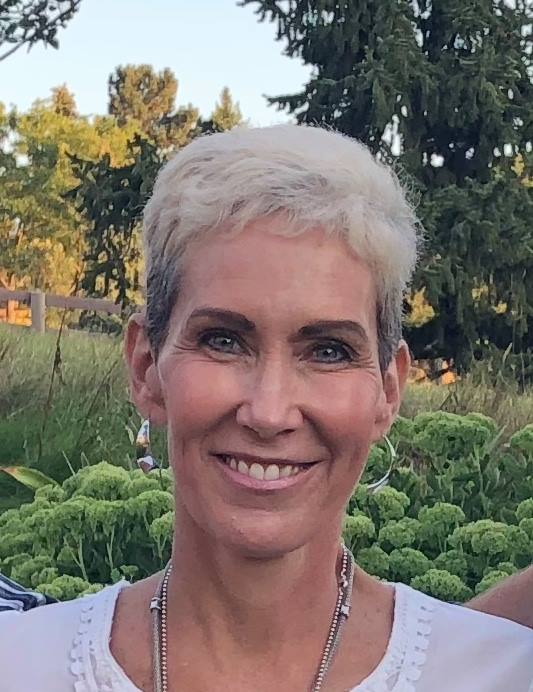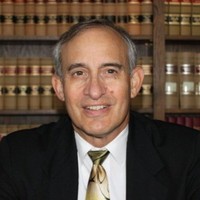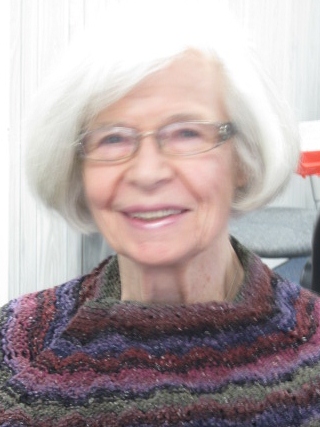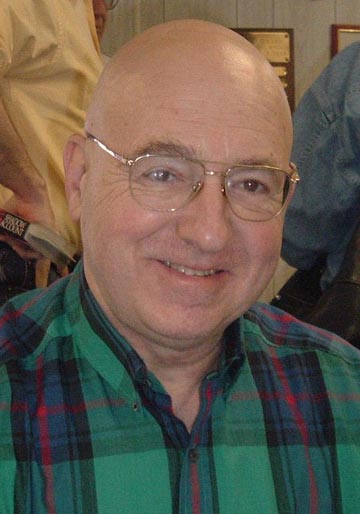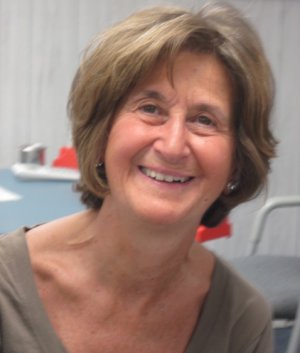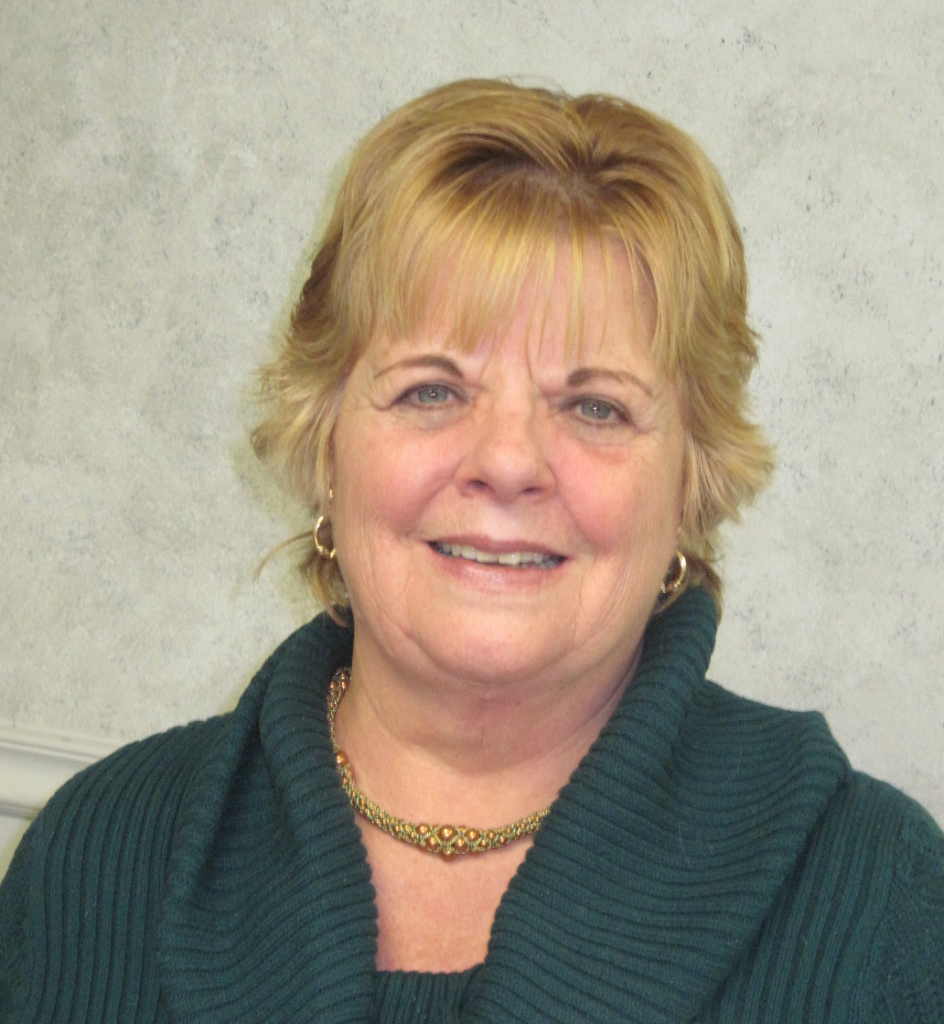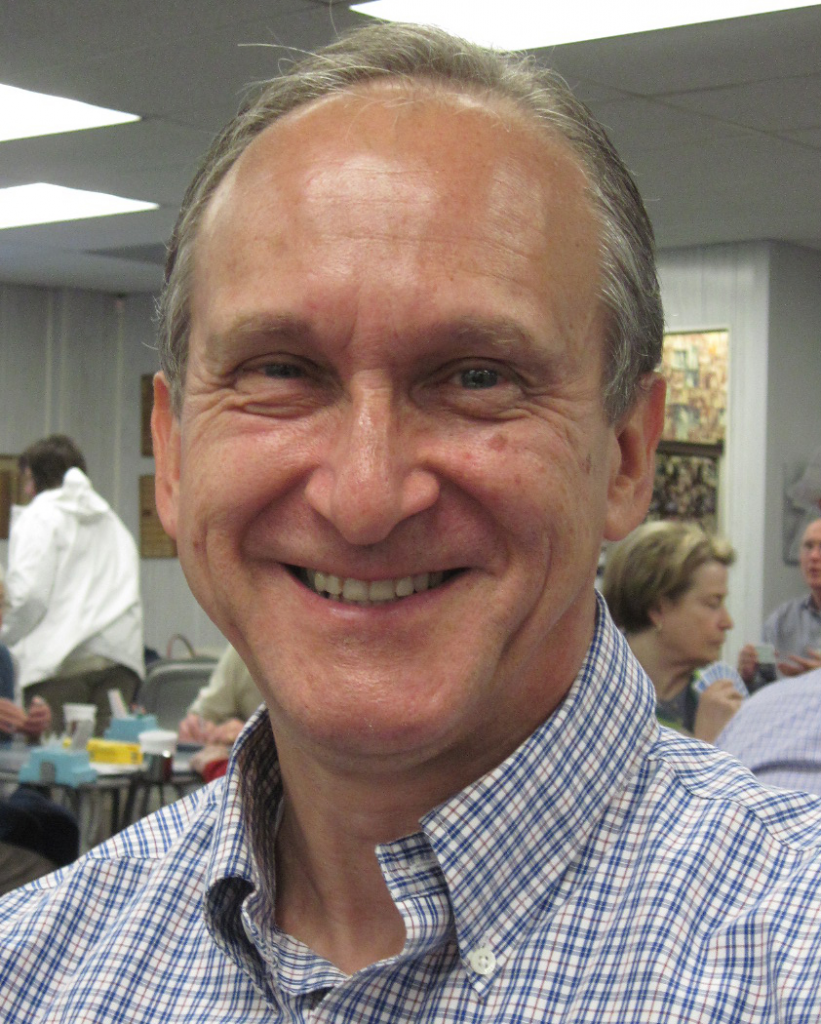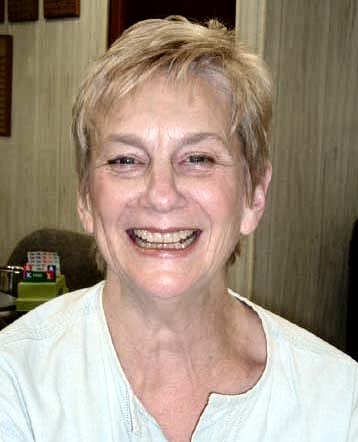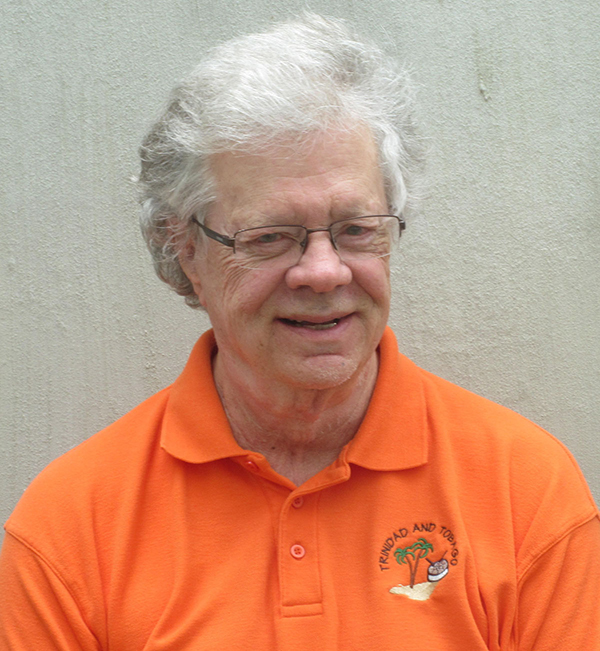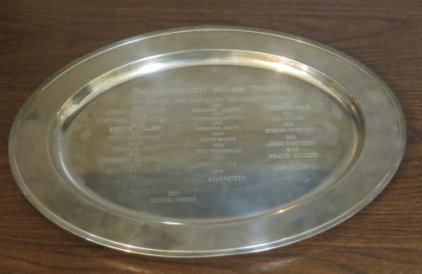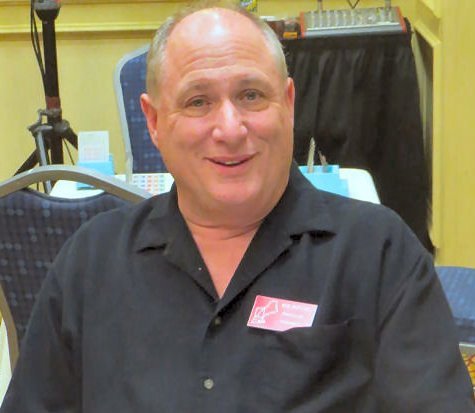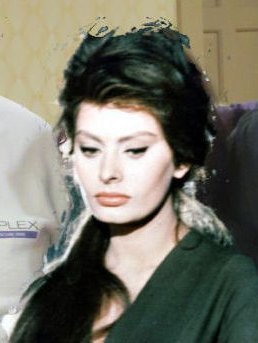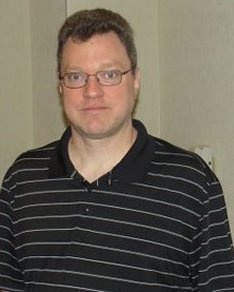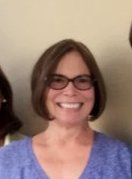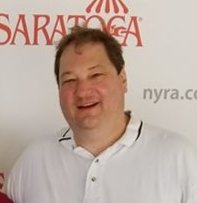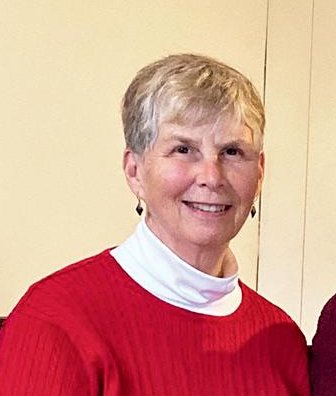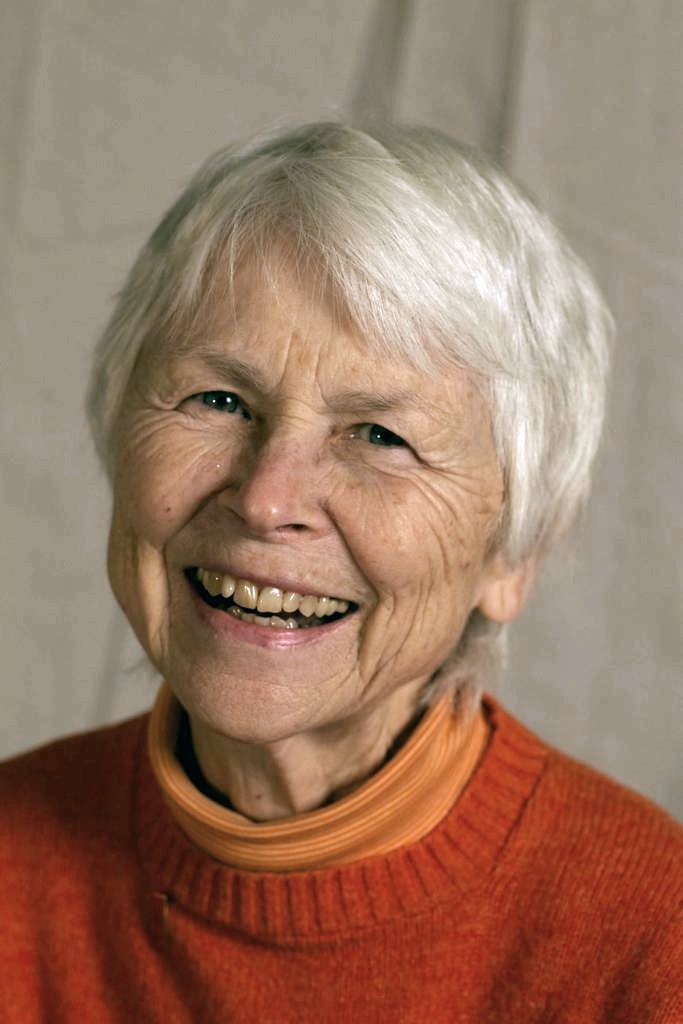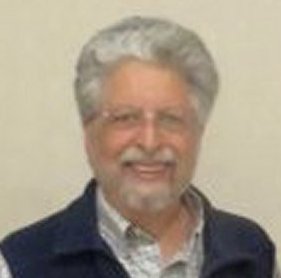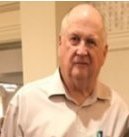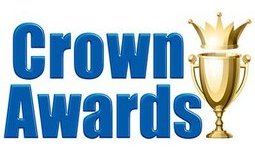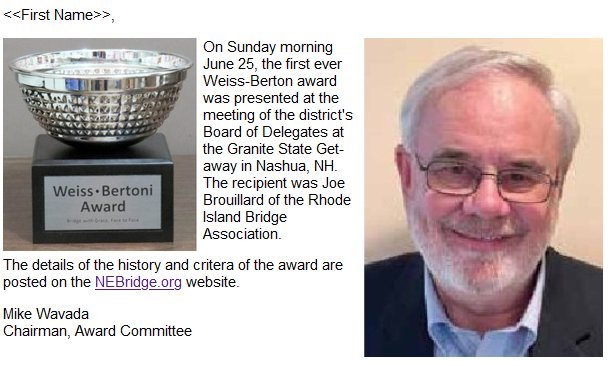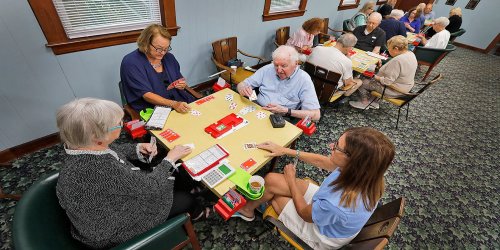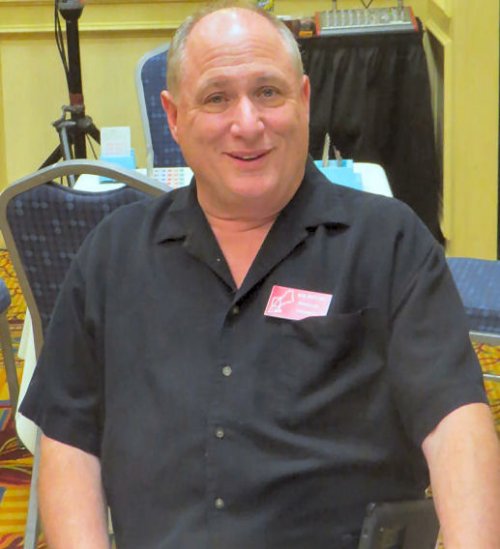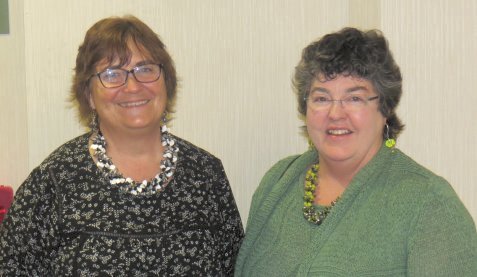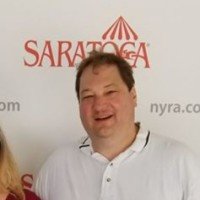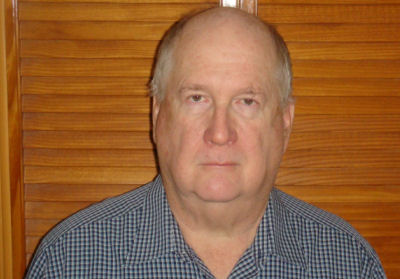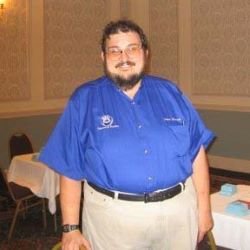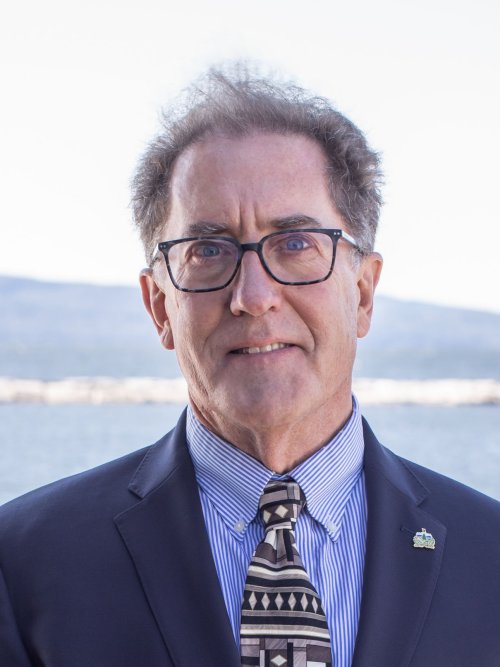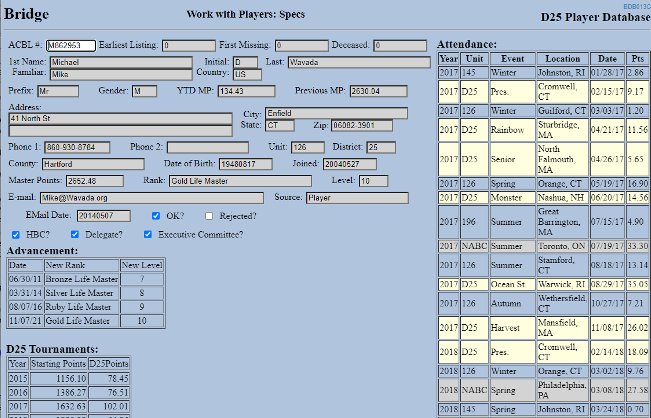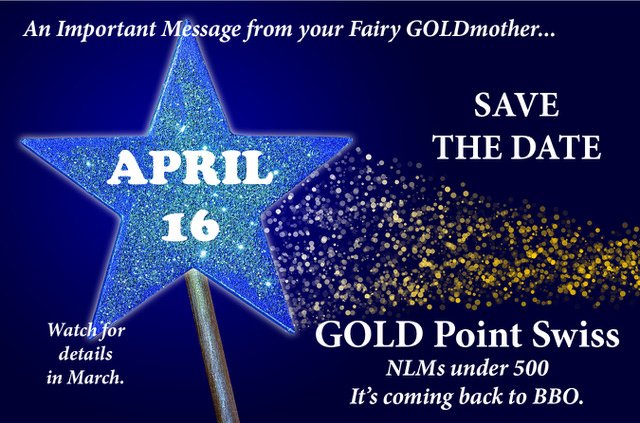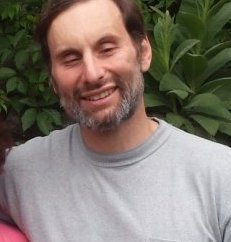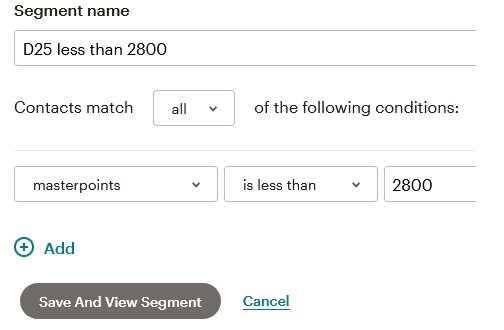Dairy for 2022. Continue reading
My notes from 2022 are rather comprehensive. Tournament bridge finally started again in that year. My experiences at the sectional tournaments in New England have been recounted here. The events sponsored by District 25 (D25) are described here.
I decided to organize this blog entry chronologically. Several other major events that occurred during the year received their own entries. Links to those entries can be found in the appropriate month.
I was looking forward to 2022 with hope of a return to some degree of normalcy. Both of the bridge clubs in which I played regularly seemed to be doing fairly well, and tournaments were scheduled nearby at the unit (state), district (New England), and national level. Furthermore my wife Sue, my friend Tom Corcoran, and I had an exciting trip planned for May. Finally, although the U-M football team lost its last game of 2021 badly, it was a gigantic improvement over the team that won only two games in the first year of the Pandemic.
January: On New Year’s Day the temperature reached 50 degrees. I walked five miles outdoors with only one stop. I also found René Conrad’s (introduced here) LinkedIn page.
Ohio State was lucky to beat Utah 48-45 in the Rose Bowl. Both teams had great offenses and terrible defenses.
On the next day I received an email from René. I wrote back to her, but there was no further interaction.
On January 3 I brought the car into Lia Honda because the windshield washers were not squirting. The service guy told me that mice had chewed a hole in the hose. He put in a new one and advised me to put traps in the garage in which the car was stored.
On the morning of the 4th I used the Dealer4 machine at the Hartford Bridge Club (HBC) for the Wednesday evening game at the Simsbury Bridge Club (SBC). I encountered no problems that I could not immediately resolve. On the way home from bridge I bought some mouse traps.
At the Zoom meeting of the HBC Board of Trustees (BoT) the big news was that Linda Starr, the director who had sent out so many clever emails during the shutdown via MailChimp, was resigning from communication duties. I thought about volunteering, but at that point I was still busy with my work for D25.
On January 6 I caught a mouse in a trap that I had set near the wooden chest on the northern wall in the garage.
I suspected that I might be charged by the BoT with finding and/or training a replacement for Linda. So, I asked for and received copies of Linda’s write-ups of what she did in MailChimp. It was certainly nice (and unusual) to work with someone who had thoroughly documented her responsibilities.
On January 7 I caught a second mouse in a trap set in the same spot.
I had ordered a blue sweatshirt with Michigan spelled out in yellow (actually maize) from someone on Espy. I received it on January 8. I already had on that I liked a lot, but the collar and the cuffs were quite frayed, and it was a little too big. The color was right and it seemed comfortable, but the letters were not precisely yellow. They had blue specks in them. I decided that it was close enough, and I did not send it back.1
On the 10th I caught a third mouse. By then Bob (the cat) seemed to have moved into the new bedroom with Sue. Bob and our other pet for 2022, Giacomo, were black cats. They were both introduced here.
I cooked carne asada tacos using a seasoning packet that Sue had purchased, but I did not think much of them. In the national championship game Georgia beat Alabama with s fourth-quarter rally. U-M finished third in the final voting, the highest that they have been since the shared national championship of 1997-98.
On January 11 a fourth mouse was executed for illegal residency in the garage.
The computer in the office at the HBC was on the fritz. I had to make the the boards for the SBC game on Wednesday manually. John Calderbank and I somehow finished first out of twelve pairs.
On the next day I trapped mouse #5. In the morning game at the HBC the boards did not match the hand records. Somebody messed up when making the boards
I caught no more mice in the garage, but on the fourteenth I trapped one in the kitchen. They can run but they love cheese too much to hide.
On January 18 Giacomo had trouble getting to his feet. That was also day on which I learned that after the latest rebooking of the cruise for May, Tom was not on the same flights as Sue and I. Tom remembered that we had paid extra to be on the same flights.
Linda had made .pbn files on Tuesday evening for me to use when making the boards. On Wednesday the 18th at 9 am I made boards for the Simsbury game. We had four tables at the SBC.
On the 20th Giacomo was frantic when he could not get to his feet, but he finally made it. He could get around OK after that. Obviously his 19th year is going to be a difficult one for him. He had never been ill or injured. Occasionally he coughed up a hair ball, but that affliction is common to almost all long-haired cats.
On the next day I made a MailChimp “audience” (the MailChimp word for contact list) for the HBC using my laptop. I had to reuse the audience that I had previously created for emails from the president of the Connecticut Bridge Association (CBA) that welcomed new members.
On January 22 Sue’s cat Bob had for some reason spent the last three nights in the bathtub in which I take a shower every evening. This morning he left behind a turd when he departed. I did not thank him for it.
Tom negotiated with Viking and got us all on the same flights: SwissAir to Budapest and British on the return.
On January 23 I walked nine laps (five miles) wearing a mask in the Enfield Square mall to investigate using it as an option for exercising in foul weather. What a sad place! Hardly anyone was shopping in the few stores that were open. The two restaurants each had one table occupied. No one seemed to be in the movie theater. I encountered a dozen or so walkers, some with dogs! An obese guy in a white strapped undershirt with a shopping cart full of stuff was at the Asnuntuck kiosk. He had plugged in some kind of weird machine. This trip inspired me to keep a rather complete log of my subsequent walks. It has been posted here.
On the next day my left lower back was sore in the morning, but it did not prevent me from walking another five miles.
On January 25 both sides of my lower back were sore when I woke up. If I did not know better, I might conclude that I was getting old.
The Tournament Scheduling Committee (TSC) for District 25 (D25) scheduled another meeting for Wednesday night, the only time all week that I cannot attend! This infuriate me. I complained, but I did not know whom to be angry at.
I learned that Unit 126 (Connecticut) was facing the possibility of holding two major face-to-face STaC2 games a week apart.
On the 26th I could barely walk with the pain in my left lower back. For some reason lying down made it worse. I immediately took an ibuprofen tablet. It helped a lot.
On the next day I spent an hour and a half on the rowing machine; the back felt OK.
On January 28 a “bomb cyclone” was predicted to arrive at about 10 pm. I forgot to pay the bill for the Chase credit card because Sue was “checking” the charges. I received a nice email from Rick Cernech. He was living in Florida and was either working as or had worked as a cruise planner.
There was plenty of snow on January 29. I decided while using the rowing machine that the creaking sound that I could hear in my bedroom was really coming from the shelves in the basement directly below it.
Joe Brouillard, a co-chair of the committee that was running the event, reported that the American Contract Bridge League (ACBL) had finally posted the schedule for the summer North American Bridge Championship (NABC) that was scheduled for July. The preparatory work that Joe and his team (of which I was in charge of email publicity) did for the NABC has been documented here.
On the last day of the month I decided to try to bleed as many of the radiators in the old section of the house as I could. Since boxes, bags and furniture were virtually everywhere, this was not an easy task. One that I was able to get at in the living room started pissing after I bled it. It was extremely difficult to get the screw back all the way in. The hot water burnt my hands pretty badly, but I finally prevailed.
I watched episode 1 of season 2 of the series “Resident Alien.”3 It didn’t seem as good.as the first season, but I still enjoyed it.
February: On Groundhog Day only five pairs registered for the evening bridge game at the SBC. I had to cancel the game. Eric and I were first at 68% in the morning game at the HBC. In the afternoon game online Sue by tied for first. Her partner was John Willoughby.
In the evening I went to see Verdi’s Rigoletto at the Cinemark in Enfield Square. About ten people were in attendance. I thought all of the performances were quite good, especially Rosa Feola’s portrayal of a more Gilda who was more mature than usual. However, I hated the production decisions in the last act.
On February 5 I sent 20,000 emails for the NABC. I played pretty well but got a bad result at the HBC game with Peter Katz. I realized that I had forgotten to send the invitational email to SBC players on Friday. I set Outlook up to remind me to do so on Fridays and Mondays.
On February 8 I received the toner that I had ordered from Ink Technologies LLC.
February 11 was astoundingly warm—55 degrees. I walked 3.5 miles outside. Sue’s left big toe was very sore from gout.
The next day was 60 degrees! I finished the blog entry on Enfield Square, but I planned to update it as stores closed and (hopefully) opened.
On February 13 I received a mysterious email from Floyd Smith in response to my query about the name of his boss at Stage Stores (introduced here). It said “Sure. She is also on Facebook. Good luck and great to hear from you!”
Two inches of snow appeared on the grass, but the surfaces were clear. I drove Sue to the Urgent Care place on the north side of Hazard Ave. for her toe. They prescribed some drugs for her.
On the next day Sue’s toe was much better. I drove her to heart doctor. The appointment was for 10:15. I made sure that she was awake by 7:45. Nevertheless, it was 10:50 by the time we reached 1699 King St., which is just north of East Windsor. They would not see her. We were home at 11:30. The temperature only reached 20 degrees, which made it one of the coldest days of a very mild winter.
On February 15 I received this email from Floyd: “Suire is her last name. Sorry about that; spell check changed it last time. “
That evening the HBC’s Planning Committee held a Zoom meeting. Earlier I had committed to playing in the Swiss game at the HBC on February 27 with Ken Leopold, Y. L. Shiue, and Frank Blachowski. Frank and Y.L were very good players with a lot of masterpoints.
On the 17th the temperature reached 60 degrees, but it was very windy.
At a Zoom Meeting the D25 Executive Committee (EC) approved the Gala tournament on May 19-22 (coinciding with the dates that I planned to be in Europe on the cruise). The plan was to charge full price for events with lots of hospitality. I abstained; the other representative from Unit 126 (U126), Sonja Smith, did not attend. She may have already moved to North Carolina.
On February 18 the temperature hit 55 degrees in the morning but it fell throughout the day. I had to return the toner to Ink Technologies. I ordered the wrong thing. The company gave me a partial refund of $31 out of the original charge of $78.
On February 21 Russia sent troops into breakaway provinces in eastern Ukraine. I walked four miles outdoors in the rather warm 52 degrees. Rob Stillman and Y. C. Hsu agreed to play as the third pair for the Wednesday evening game in Simsbury. Sue will play with Maria Van der Ree.
On February 23 it was 72 degrees when I left the HBC after winning the open pairs game with Eric in morning. An email at 3:00 from Judy Larkin informed me that Ida Coulter could not play. Minutes later Renee Janow and Lucie Fradet asked to play. Sue was too tired to play, and so Judy ended up playing with Maria. I played terribly. I was stressed out from juggling the schedule.
On February 24 Russia invaded Ukraine. I walked nine laps in the mall.
In the Swiss on the 26th we lost our first two matches on flukes. We came back to win the last three by 18, 18, and 20 victory points to finish second out of twelve. YC made 6NT after he underled his ♠A.
March: For Sue’s birthday party on March 2 at the SBC she brought cupcakes for everybody. There were only 3 tables, but we had a good time.
On the next evening Sue and I went to supper with Tom at the Puerto Vallarta Mexican restaurant. The tacos al carbon were not as good as I remembered them. Tom ordered his usual gigantic bowl, which was no longer on the menu. I don’t remember what it was called.
On March 6 I walked 5 miles outside. The temperature was 62 degrees, but I needed to circumvent many puddles from the snow melting.
On March 9 about two inches of snow was on the lawn. The streets had been cleared, but Eno Hall was closed, and so the SBC could not hold a game.
By March 10 I had read the following books from the Enfield Public Library: T.C. Boyle’s Talk Talk; Max Barry’s The 22 Murders of Madison May and Lexicon. I liked Lexicon the best, but they were all good.
On March 18 the temperature hit 76 degrees, a new all-time record for the date. I walked five miles in a tee shirt. I learned that the Xiaos (aged 10 and 13) won the 0-10K Swiss at the NABC in Reno. The two youngsters
On March 20 Sue and I played in the “8 is enough” Swiss with Mayank and Aarati Mehta. Finished in the middle because of a hand in which Rob Stillman and Ronit Shoham bid 4♥ against Sue and me, but the Mehtas let Y. C. play 3♦.
On March 27 there was no pee or poop in the litter box. I brought the box upstairs, and Giacomo took a pee and then lounged in the box. He had never done this before. It was not a good sign.
On March 30 Ken and I won a five-table STaC game at the SBC. Sue and I could not find Giacomo when we returned to Enfield.
On the next morning I found Giacomo’s body lying in the back yard just outside of the cat door. He had not gone outside in weeks, maybe months, and he had not been downstairs for days. Nevertheless, he must have used up all of his remaining strength to descend the stairs, walk over to the ramp, climb up the ramp to the cat door, and exit through that door.
He was a wonderful cat. I really mourned for him, and I still miss having him on my lap while I watch television. More details about long relationship with Giacomo before the Pandemic can be found here.
In the last few years of Giacomo’s life I apparently became allergic to something about him. Several times I had rather severe outbreaks of hives, and I got the sniffles when he sat on my lap. After he died these symptoms disappeared.
I did the income taxes using FreeTaxesUSA.com. My federal tax was $0, and I received a refund of over $900 from Connecticut.
A lot of other things happened on the last day of March. An oil bill for $780.52 arrived. I brought the litter box, which now is officially Bob’s, back downstairs. While I was doing so, I fell into some empty boxes and bruised my left hand. It hurt, but it was not fatal. The Sony audio recorder that I ordered for the cruise arrived. I played with it enough to feel fairly comfortable using it.
April: On the 2nd of the month M&T Bank took over our previous bank, Peoples United Bank, which had a few years earlier purchased United Bank. United had purchased Rockville Bank, from which I negotiated our final mortgage, as documented here. This changeover seemed to go rather smoothly, and I like the new website slightly better than the old one.
Bob has found the litter box. Thank goodness.
Peter and I won the six-table STaC game at the HBC. On consecutive hands grand slams could be made in hearts. We only bid one of them, but no one else took all the tricks on the other one.
On April 6 the switch for the lights in the basement did not work. Two days later I got it to work, but it was difficult. Eventually this problem disappeared or maybe I just adjusted to the toggle.
On April 11 I received the second booster shot at a pharmacy in Springfield. Sue had already gotten hers
On April 15 I downloaded the VeriFly app that Viking had recommended for my phone and eventually got it to work. This was a complete waste of time, and it stressed me out. It was never needed or, for that matter, useful on the entire trip.
On April18 Ken and I learned that we had been dumped as teammates for the upcoming Grand National Teams (GNT) online qualification tournament by Felix Springer and Trevor Reeves again. Details can be found here. I was not looking forward to the online part again, but I thought that we would have a pretty good chance of qualifying. Playing in the GNT in Providence in July had been my goal for many months, and I had avoided accumulating masterpoints throughout the Pandemic in order to maintain my eligibility. I ordinarily do not hold grudges, but I still feel bitter about this more than a year and a half later.
On April 29 Peter Katz and I won the last Saturday game at the HBC before it went on hiatus. There were only three tables. I faked out Y. L with a terrible overcall.
May: Something incredible happened on May 2. Sue took Bob to the veterinarian. She learned that the big clump that had been on his back for years was just hair. The vet shaved it off, and it never grew back. How can this be? He would not let us touch it; why was it so sensitive? What cat has that much hair? What made it keep growing for such a long time? Sue said that the vet said that it was just bad grooming. He also said that Bob was at least thirteen years old.
That cat never ceased to amaze me. After his haircut he suddenly liked to be petted, he also became more friendly to me. One untoward result was that I developed very small bumps around my ankles that were itchy and a little painful. I must have been allergic to him or at least his dander.
I downloaded the Uber app for possible use in Vienna to get back to the ship from the opera. The rest of the bizarre preparation for the European cruise has been catalogued in some detail here.
I learned that thirty staff members of Henry Barnard School have Covid-18! I did not realize that the school even had that many employees. The state of Connecticut was showing a 9.4% positivity rate. The good news was that Germany’s level, which I had been following closely, was down by quite a bit. The other three countries on our itinerary were also improving.
The European cruise trip began on May 5. The incredible story of that day and the rest of the journey is well documented here. One thing that is not related there is the fact that the little bumps on my ankles cleared up while I was in Europe. The ones on my right ankle began to reappear in June or July.
On May 23 I mowed the lawn, which had by then become a jungle. While doing so I realized that I had to attack the poison ivy, which was much more prevalent than in 2021. I ordered some Roundup that could be sprayed on the plants from Amazon.
Only five pairs had registered for the Wednesday night game in Simsbury, but I had not yet heard from Lori Leopold. She could usually find a partner on short notice.
The next morning brought another frustrating bridge game. When I got back to the house I needed to cancel the Wednesday evening game at the SBC because only five pairs had registered.
I brought to the Verizon office on Hazard Ave. the Pixel 2 cellphone that had failed me on the cruise. The tech guy at Verizon showed me that the phone was considerably thicker in the middle than on the edges. He explained that this was a symptom of overheating. So, the phone was officially dead. In retrospect I concluded that the transformer in the cable that connected the phone to the outlet in my cabin must have failed to convert the current to 110 at least once on the cruise, and the European current fried the battery or something. I kept the phone plugged in virtually all of the time that I was in my cabin.
We planned on eating at the Kebab House before entering the Cinemark at Enfield Square to see the opera, but it was not open. We watched the rust-belt production of Donizetti’s Lucia di Lammermoor. The character of the priest just did not work. Otherwise, the first two acts were very moving, but the third act was a total mess until Javier Camarena’s outstanding performance near the end. The many interviews during the breaks. were insipid. Sue and I settled for popcorn for supper. Incredibly she stayed awake throughout the performance.
On May 25 I discovered that our mortgage on the house was completely paid off! I was not expecting this news for several months.
June: At some point in June Sue purchased for me a new (well, new to me) cellphone. This one was a Samsung Galaxy S7. It was similar to Sue’s, and so she could sometimes help me with it. A year and a half later I still hated it, but not as much as I loathed the Pixel 2. The Samsung had not ordered any pizzas for me, but, then again, I had not downloaded the Slice app. I could almost never figure out where the app that I wanted to use was hiding, and it randomly plays YouTube videos and other stuff from the Internet. I figured out how to answer the phone in a minute or two, but it took me eighteen months to figure out how to hang up.
On the 1st I learned that Sally Kirtley, the director at the SBC, had tested positive for Covid-19. Ken had to direct at the Wednesday night . Ken and I won easily.
On the very next day Sally came to the ACBL’s walk-through in Providence. I very much enjoyed talking with old friends like Paula Najarian.
On June 13 I received two bottles of Roundup that I had ordered from Amazon. I immediately went outside and sprayed the poison ivy that was growing along the fence on the north side of the yard. Two days later I sprayed the poison ivy again. I wore a mask during both sprayings, and I was careful not to get any on my skin or clothes.
The Federal Reserve raised interest rates to combat the serious inflation that began after the country reopened. Any moron could see that the main culprit had been pent-up demand from the shutdown, and the secondary cause was shipping holdups. Nevertheless, I had to peel a sticker off of a gas pump at Costco that claimed that “Biden caused this.”
I met Mike Barke, a geography professor at the Northumbria University, and his wife Vivienne on the cruise. Mike had recently published a book entitled Newcastle upon Tyne: Mapping the City. As soon as I got back to the U.S. I ordered a copy. It finally arrived on June 17. It was both beautiful and interesting. It made me want to visit the Tyneside area.
The Longest Day game on June 21 at HBC very annoying. There was much too much noise. Donna Feir pressed everyone to play faster and then canceled the last round because the pizza had arrived. This turned out to be a super-spreader event for Covid-19.
From an email from Cindy Lyall, the treasurer of the CBA, I earned that U126 lost $4,000 on the tournament in Orange. Ouch!
On June 23 Mary Whittemore reported that her name was missing from the “Top 200 List” on the CTBridge.org website. I asked the CBA board members if anyone knew why. Don Stiegler sent me a correct list. It showed that many names were missing from the one on the website. Evidently no one knew how that page got updated on the website. Bob Bertoni, who died in 2021, set up the website and, because the unit had no webmaster at the time, did all of the updating.
On June 29 Sue and I attended a potluck supper at Sue’s church, the Somersville Congregational Church. I always feel very uncomfortable at these religious gatherings, but this one was tolerable. After supper we listened to Graham Van Keuren’s presentation on his vacation with his spouse Eric in Israel. I recorded it on my audio recorder. It was a good presentation, but it certainly did not make me want to visit what I considered to be an apartheid country.
On June 30 Dr. Anthony Fauci announced that he had Covid-19 for the second time. This news astounded me. Did he take no precautions? The Pandemic was finally running rampant at the HBC. Only five tables were occupied on Tuesday morning, and the evening game was canceled. Only three tables appeared on Wednesday, and the Simsbury game was canceled. Both of the games at the HBC on Thursday were canceled.
July: The big event of the month was the Providence NABC. I attended most of the event, but Sue decided not to go. I kept notes on my laptop and wrote them up a little later. They have been posted here and here. It was good to see some familiar faces, but the bridge games were not much fun.
The tournament was another super-spreader of Covid-19. Almost everyone with whom I played or associated caught the virus. I almost ripped the driver’s side mirror off of my car, and the hotel rooms were never cleaned. However, I avoided getting the disease. So, in a period of about two and a half months I had survived three super-spreader events—the cruise, bridge at the HBC, and the NABC. I credited my collection of free N95 masks that I had amassed from giveaways at various retailers.
August: I was hoping to have a party at the SBC to celebrate my seventy-fourth birthday. Not enough people were able to attend on the 17th. Instead, I decided that the SBC would have a Christmas party on August 24. Twenty people attended, and so we had five tables and lots of food. The players gave me a $100 Amazon card and $20 in cash. I was a little upset that Sue and I arrived so late because she, as usual, was not ready on time. I had made beef Stroganoff that needed to be heated up in the slow cooker. I crawled under the table and plugged in the pot, but I neglected to turn it on.
On August 26 the refrigerator stopped working. Panic set in. Sue and I resolved to deal with it the next morning. By then it had resumed functioning. If we ever figured out the cause of the outage, I made no note of it.
Throughout the period from my arrival back in Enfield after the cruise up to the end of August the weather had been hot, and I had spent every spare minute working on the journal for the Grand European Tour. On August 28 I finally finished it and sent an email to quite a few people announcing that the journal had been posted on Wavada.org. I was quite pleased to hear back from both the Barkes and the family from Saskatchewan.
I noticed that the Shell station on Hazard Ave., which had been operational since we moved to Enfield in the late eighties, was closed.
On August 29 I received a long email from Tom Caputo, whom I had worked with at both Lord & Taylor (described here) and Saks Fifth Avenue (here). He was looking for a job at the age of 60. He asked me if I knew about anything being available. Since he knew very well that I had had nothing to do with retail for at least eight years, he must have been desperate. Maybe he thought that I had kept in touch with people more than I had.
I also received an email from Mike and Vivienne Barke.
August closed with an incredibly disappointing Ocean State Regional tournament in Warwick, RI. I had a rotten time, the attendance was abysmal, and the district lost money. The details have been posted here.
September: On September 13 Bob decided to take over Giacomo’s old position atop the back of the couch in the living room. On the next evening he lost his balance (something that Giacomo had never done in eighteen years) and tumbled off the back. He was in a panic and tried unsuccessfully to climb up the drapes to regain his perch.
On the following evening Bob had clambered back into Giacomo’s old spot. When I seated myself in my chair a few feet away, he obviously wanted to come join me, but he was evidently afraid to land on the pillows that were arrayed on the couch’s cushions. I moved them out of his way. He then descended to the sitting level and, after executing calculations in his walnut-sized brain, made the “mighty leap” to the armrest of my chair. He sat peacefully on my lap for a few minutes. Then he got nervous, peed on me, descended frantically to the floor, and did his “breakdance.” Much more has been written here about the misadventures of this very strange feline.
After sleeping comfortably for a month or more on beds in hotels and cruise ships, I judged that I needed a new mattress. The one that I had been sleeping on was more than thirty years old and was a little too short for me. Sue selected one for me as a late birthday present. It arrived on September 14. The delivery people set it up and took away the old one. Sue, of course, kept the obsolete pieces that held it off the floor. I found them leaning against the bookcase in the hallway. The new mattress was considerably better than the old one, but I still woke up with a backache more often than not.
On September 16 I talked with someone from the town of Enfield about the tax bill that I had received that day. It contained a significant interest charge because I did not pay the July installment. The simple reason for my delinquency was that I had never received a bill. It turned out that the mortgage holder, Peoples United Bank, had payed the portion due in January. The mortgage schedule indicated that five payments were remaining when the bank declared that it was fully paid. I was sent a notice of this, but I was never apprised of the bill from the town that the bank must have received. The lady with whom I talked refused to waive the interest charge. Since the bank that held the mortgage at the time that the bill was sent no longer existed, I did not have any recourse except to pay.
On the same day using my free MailChimp account, I sent an email that I had previously composed to try to improve the attendance of the players with less than 500 masterpoints at the upcoming sectional tournament in Orange.
On September 17 two items that I had ordered from Amazon were delivered. The first was a reading light that I would be able to clamp to the bookshelf above the new bed. The second was a book by Daryl Gregory entitled We are All Completely Fine. I liked this book much less than the one by Gregory that I had read on the cruise, The Spoonbenders.
Bob had mysteriously disappeared on September 16. He returned two days later and spent all day and night by the stove. Something was apparently wrong with him, but we were not too concerned. His behavior had always been eccentric.
Eric, Motoko Oinaga, John Debaggis, and I finish second out of ten in the Swiss event held at the HBC on September 18. We were the #8 seed. Eric and I bid and made slams on two of the last three hands to win the round by 24. We lost only to the winners—Lesley Meyers, Laurie Robbins, Felix, and Trevor.
Sue made an appointment at the vet for Bob on September 20. I heard him at some point after 4 a.m. on the 19th. At 5:45 I brought the litter box upstairs and shut the door to the basement, but when Sue woke up Bob was nowhere to be found. I opened the door to the basement. He came in about 9:30, and I shut the door to the basement again.
Before my bridge game on September 20 I placed Bob in the cat carrier, but at some point he somehow escaped. Sue was able to get him back in and took him to his 12:30 appointment. We found out that he had a tumor in his mouth or throat. There was not much hope for him, but the doctor gave Sue some medicine for him. Sue gave him the drops when I got back from bridge and could hold him. He needed them twice a day. I was so involved that I forgot about my Zoom meeting of the HBC Planning Committee.
We probably should have put Bob down when we heard about the tumor. He had always been Sue’s pet. She had to make the decision, and she could not do it.
On the last day of the month I sent a second email for the CBA.
October: On October 3 Sue started giving Bob antibiotics and steroids. He started eating a little better. Sue took him to the vet again on the 18th. He was still not eating much even though Sue was diligent about preparing meals that were both nutritious and easy to swallow.
The October 19 Simsbury game was canceled. I drove Sally to Southbridge to check out the hotel that we would be using for the tournament in October, which was named the Spectacle Regional because the hotel was the administration building of the defunct American Optical Company. The ground floor was very modern, but the the playing area not very large. The restaurant, which was called Visions, was not open except for groups.
On the same day Sue’s cousin Robby Davis was found dead in his apartment.
On October 21 I had breakfast with Sue and Mark Davis. Mark was very involved in a gigantic project involving his ancestry. For some reason I have almost no interest in exploring mine. Someone from the Spokane branch of the Wavada sent my dad a lot of research that she had done. Sue got it from him and put it somewhere. I have never seen it.
On October 22 there was no game at the HBC. I went by myself to see Cherubini’s Medea at Cinemark at the Enfield Square. Sondra Radvanovsky gave an outstanding performance in an opera that had not been performed since Maria Callas played the title character. A carnival was set up in the mall parking lot.
On October 24 I drove to the mall for a walk. I forgot my little blue mp3 player, and I wore the wrong shoes. I had to drive back home and start over.. A girl in a red suit made of balloons and a small backpack was walking stiff-legged around the mall. I think that she was supposed to look like an astronaut.
November: The first week of the month was unseasonably warm. On the 7th it was 67 degrees at 5 a.m. and 80 as I drove through Hartford at 1 p.m. after playing with Nancy Calderbank for the first time in the mentorship program. She had asked me to teach her 2/1.
On November 8 I finished writing the Bulletin for Southbridge and sent it to Sally for printing.
In the mid-term elections the Republicans, as expected, won the House of Representatives, but the Democrats held onto the Senate after Senator Warnock won another runoff.
I received a bill from Somers Oil for $798.86!
The hilarious postscript to the Grand European Tour occurred on November 8, almost six months after I departed. Sue and I were in the living room when we heard the unmistakable sound of claws shredding paper. Sue rose from her chain, hurried into the kitchen, and yelled, “Bob, what have you gotten into now?” She snatched a paper bag from beneath his claws. When she looked inside she found the passport for which she had searched for several days back in early May. She should have just asked Bob where it was.
11/23 Sue and I spent Thanksgiving alone. I sent the following email to the Barkes and Steve Flamman:
I hope that you are all doing well.
I thought that you might be interested in this. Two weeks ago my wife Sue and I were watching TV in our living room in the evening when we heard the unmistakable sound of our cat Bob shredding something made of paper in the kitchen. Sue sprang from her chair to prevent further damage. She found that Bob had somehow discovered a small paper sack and had pulled it out onto the floor. Sue retrieved it from him and discovered her current and expired passports as well as a few other items that had been missing for over two years.
Incidentally, I included two photos of Sue unsuccessfully trying to negotiate a deal with Viking on the Day 0 page of my journal and one that she took of Bob on Day 12.
Today is Thanksgiving in the U.S. It is hard to find things to be thankful for lately, but I am definitely thankful for the friends that I made on the cruise in May.
I had more to be thankful for three days later. Michigan defeated Ohio State 45-23 at the Horseshoe in Columbus to win the eastern division of the Big 10 for the second year in a row. They did it without the Big 10’s best running back, Blake Corum. Donovan Edwards filled in for Corum very well. The Wolverines finished the regular season 12-0.
December: A week later the Wolverines beat Purdue in the Big 10 title game 43-21. They have qualified for the four-team College Football Playoff for the second year in a row.
December 8 was the tenth anniversary of our wedding ceremony. Sue and I are about as unhappy as we have ever been. Sue blames her health and various inanimate objects. I blame the house.
Curtis Barton, the president of D25, sent an email to members of the Executive Committee indicating that all senior employees of the ACBL had been fired. He then sent a correction that said that, according to Mark Aquino, who as Regional Director should know, “fired” is not the right word.
On December 9 Sue suddenly screamed, “I hate my life!” I was thinking that I hated our house, which was a pigsty. I also resented that almost whenever I needed something I must ask her where it was. Usually she did not know and said that she would look for it. In addition, we had so much junk everywhere that every time I that I went to get something I must remove four or five other items and then replace them in the right order. The refrigerator, for example, was always full to overflowing. THERE ARE ONLY TWO OF US!
However, as always, I said nothing because I did not want to trigger a tearful reaction or a panic attack.
December 12 brought the first snow of the season.
At 5 a.m. on the next day the weatherman on WTIC AM reported that it was 8 degrees in Granby and 19 in neighboring East Granby.
On December 17 I bought a rib roast. Sue forgot about Tyesha’s confirmation. Then she also bought a rib roast because she forgot her shopping list, and my phone was off because I forgot to turn it back on after bridge.5 I discovered that for weeks she had been leaving me voicemail messages that I did not know about. We have become two incompetent old farts.
On December 21 we had five tables at the SBC game. Sue and I arrived too late for the holiday party because Sue went to the store at 4:30 p.m. to buy the fruit that she had promised to bring. The players gave me $130.
On December 23 very strong winds uprooted the pine tree in the front yard. I heard a loud crashing sound at about 5 a.m. The tree fell straight towards our house, but there was no damage at all because the top section landed harmlessly on the patio between the old section of the house and Sue’s garage.
The high temperature the next day was only 19. I got a letter from ConnectiCare. The premium for my dental policy went down from $79 to $56.
We did nothing special on Christmas day. Sue may have watched It’s a Wonderful Life,6 but I didn’t.
Crystal Lake Construction, the company that cleared the snow from our driveway and sidewalks chopped up and removed most of the fallen tree. They came back later for the stump.
On the same day I received an email from Mark Aquino about the new training required for directors at sectionals, On the 27th I met with the HBC directors after the bridge game. Peter Marcus, who generally knew these things, had reported that the new rules applied only to events with masterpoint limits in excess of 500.
On the last day of the year Michigan lost to TCU 51-45. Early in the game J. J. McCarthy threw two interceptions that were returned for touchdowns. It was a wretched end to an awful year.
A week later TCU got clobbered by Georgia in the championship game. U-M would have done better, but they probably would have lost.
1. By the fall of 2023 a small spot had appeared on the front of the sweatshirt. It looked like a grease stain, but on closer inspection it was obvious that the exterior had worn thin. I could hide the blemish with ink from a Sharpie pen, but that was not a good permanent solution.
2. STaC stands for “sectional tournament at clubs”. These were games held at clubs that awarded more points, and the overalls included all of the participating clubs. Regular STaCs paid silver points. The points in Royal STaCs were evenly split between black, red, gold, and silver points.
3. “Resident Alien” was originally shown on the Syfy channel. Sue and I watched season 1 and season 2 on the streaming service called Peacock. At the time it was free on Cox cable. Eventually they wanted people to buy monthly subscriptions and restricted the free option so much as to make it worthless.
4. Apparently Peoples United Bank wanted our mortgage off of its books when it was taken over by M&T bank. The five mortgage payments that I saved by this action more than covered the cost of the July tax bill, but someone should have told me that that amount would be due.
5. I did not learn how to put the Samsung cellphone on “vibrate” until much later. It was easy to do but not a bit intuitive.
6. All year long Sue watched TCM during every waking (and many sleeping) moment.


